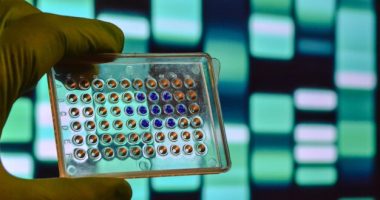Obesity remains one of the global health challenges of the 21st century, posing significant risks for numerous chronic illnesses such as diabetes, cardiovascular disease, and certain types of cancer. Despite extensive research, understanding the complex biological mechanisms underlying obesity is crucial for developing effective interventions and treatments. Recent research conducted by Müjde Fadıloğlu and colleagues has delved deeper into the biomolecular landscape of obesity by examining the roles of specific biochemical markers in obese versus non-obese individuals. Their study, titled “Evaluation of mucin-1, nuclear factor κB, and hemoglobin A1c levels in obese and non-obese individuals,” focuses on the analysis of serum levels and gene expressions of mucin-1, nuclear factor κB (NF-κB), and hemoglobin A1c (HbA1c), which are potentially pivotal in the pathophysiology of obesity.
The research team conducted a comprehensive case-control study involving 80 participants, comparing 40 healthy individuals with 40 patients diagnosed with obesity. By utilizing ELISA and quantitative real-time polymerase chain reaction techniques, the study not only measured the serum levels but also analyzed the gene expressions of these markers. Their findings indicate significant differences between the groups, revealing higher levels of mucin-1, NF-κB, and HbA1c in the serum of obese individuals, coupled with an upregulation of their genes. This introduction of novel data emphasizes the potential of these markers in identifying and understanding the multifactorial nature of obesity, thereby aiding in its diagnosis and the formulation of targeted treatments.
The global prevalence of obesity has dramatically escalated over the past few decades, making it a foremost public health concern. According to the World Health Organization (WHO), obesity is a primary driver for an array of non-communicable diseases, including diabetes, heart disease, and various cancers. In response to this growing epidemic, understanding the intricate biological pathways that contribute to obesity has become a significant focus of modern medical research. The study conducted by Müjde Fadıloğlu and colleagues offers a fresh perspective by investigating biochemical markers that could be intimately linked with the pathogenesis of obesity.
In the increasingly complex landscape of obesity research, identifying specific biochemical markers provides a window into the cellular and molecular mechanisms that underlie this condition. Mucin-1, NF-κB, and HbA1c are among such markers. Mucin-1, a cell surface glycoprotein, is traditionally associated with cancer and inflammatory responses but has recently been observed in adipose tissue regulation and metabolism. NF-κB, a protein complex known for its key role in regulating immune response, has also been implicated in promoting adipogenesis and inflammasome pathways. Hemoglobin A1c, commonly used as a diagnostic tool for diabetes management by reflecting average blood glucose levels, could offer insights into the metabolic dysfunctions commonly associated with obesity.
The rationale for selecting these markers stems from their significant roles in both metabolic and inflammatory pathways, which are often exacerbated in states of obesity. Prior research has hinted that these biomarkers are inversely correlated with metabolic health, meaning their elevated levels could potentially predict the presence or risk of developing obesity-related complications. Given their involvement in various biological functions, studying these markers together could provide a more comprehensive understanding of obesity’s multifactorial nature.
By examining both the serum levels and gene expressions of mucin-1, NF-κB, and HbA1c, Fadıloğlu’s team aims to delineate their precise roles and interconnections within the context of obesity. Such an approach might unravel new molecular mechanisms and pathways that were previously unexplored in obese populations, opening up new avenues for targeted interventions and therapies.
This study aligns with a broader shift in obesity research, which is increasingly embracing a precision medicine approach. Precision medicine, which involves tailoring medical treatment to the individual characteristics of each patient, necessitates an understanding of the molecular basis of a disease to more effectively align treatments with patient sub-types which may emerge through biomarker profiles.
Furthermore, risk stratification using biomarkers could enable earlier intervention strategies before full onset of obesity-related complications, potentially improving patient outcomes and reducing healthcare costs. Thus, the work of Fadıloğlu and her team is not only important for its immediate findings but also for its contribution to the overarching paradigms shifting how obesity is approached and managed in clinical settings.
The methodology employed by Müjde Fadıloğlu and her team in their research, “Evaluation of mucin-1, nuclear factor κB, and hemoglobin A1c levels in obese and non-obese individuals,” is critical in understanding the differential biochemical profile between obese and non-obese individuals. The researchers used a case-control study design to conduct this comprehensive analysis.
### Participant Selection and Grouping
To obtain a representative sample, 80 participants were enrolled in the study, divided equally into two groups: one consisting of 40 healthy non-obese individuals (control group) and the other comprising 40 obese patients (case group). The classification of obesity was based on Body Mass Index (BMI) criteria set by the World Health Organization (WHO), with a BMI of 30 kg/m² or more qualifying as obese. Participants were matched based on age and gender to minimize variability due to these factors.
### Data Collection Procedures
Comprehensive data collection was undertaken, involving both biological sample collection and clinical data acquisition. A detailed medical and lifestyle questionnaire was administered to each participant to gather information on demographics, health status, dietary habits, and physical activity levels.
### Biological Sample Analysis
Blood samples were collected from all participants after a 12-hour fasting period to ensure that the analysis of serum markers was not influenced by recent food intake. These samples were processed to separate serum, which was then stored at -80°C until analysis to prevent degradation of proteins and genetic material.
### Biochemical and Genetic Analyses
The core of the study involved the analysis of serum levels and gene expression of mucin-1, NF-κB, and HbA1c:
1. **Enzyme-Linked Immunosorbent Assay (ELISA):**
– Serum levels of mucin-1 and NF-κB were quantified using specific ELISA kits. This technique is highly sensitive and allows for the precise quantification of proteins in biological fluids.
2. **Quantitative Real-Time Polymerase Chain Reaction (qRT-PCR):**
– Gene expression levels of mucin-1, NF-κB, and HbA1c were measured using qRT-PCR. This method quantifies mRNA levels as a proxy for gene activity, providing insights into the transcriptional regulation occurring in obese versus non-obese individuals.
### Statistical Analysis
Data were analyzed using statistical software. Continuous variables were expressed as mean ± standard deviation and compared using the Student’s t-test for independent samples. Categorical data were analyzed using χ² tests. Correlation between serum levels and gene expression of the targeted biomarkers was assessed using Pearson’s correlation coefficient. A p-value of less than 0.05 was considered statistically significant.
### Ethical Considerations
The study protocols were reviewed and approved by the institutional review board (IRB), and all participants provided written informed consent before partaking in the study.
This rigorous methodology ensures that the findings concerning the roles of mucin-1, NF-κB, and HbA1c in obesity are robust and provide a solid foundation for further investigation into their potential as diagnostic and therapeutic targets. Moreover, understanding their interconnected pathways might lead to novel interventions that can be personalized to effectively manage or potentially reverse obesity in affected individuals.
### Key Findings and Results
The study conducted by Müjde Fadıloğlu and colleagues yielded several significant findings that illuminate the biochemical differences between obese and non-obese individuals, particularly in relation to the markers mucin-1, NF-κB, and hemoglobin A1c (HbA1c).
#### Elevated Biomarker Levels in Obese Individuals
One of the primary observations was that serum levels of mucin-1, NF-κB, and HbA1c were markedly higher in the obese group compared to the healthy non-obese control group. The mean serum levels of mucin-1, for instance, were found to be significantly elevated in obese participants. This suggests that mucin-1 could be actively involved in the metabolic dysregulation associated with obesity.
Similarly, NF-κB, a marker known for its role in inflammatory processes, displayed elevated serum levels and gene expression in obese individuals. This finding supports the hypothesis that chronic low-grade inflammation is a critical component of obesity’s pathophysiology.
Moreover, the levels of HbA1c, which is generally used to monitor long-term glucose control, were also higher in the obese group. This not only correlates with the increased risk of diabetes among obese individuals but also highlights the metabolic imbalances that are prevalent in obesity.
#### Gene Expression Patterns
The study also delved into the gene expression levels of these biomarkers, providing an in-depth look at the molecular activities influencing obesity. The quantitative real-time polymerase chain reaction (qRT-PCR) results confirmed that the genes encoding mucin-1, NF-κB, and HbA1c were upregulated in the obese subjects. This upregulation points to an intrinsic alteration in gene regulation, which may contribute to the persistence and exacerbation of obesity.
The correlation analysis further strengthened these observations, demonstrating a strong positive correlation between the serum levels and gene expression of each biomarker. This suggests that both protein production and genetic control mechanisms are actively engaged in the obesity phenotype, facilitating a sustained environment of inflammation and metabolic disruption.
#### Implications for Disease Mechanisms and Interventions
From a mechanistic standpoint, the results propose that the interaction between protein levels and gene expressions of mucin-1, NF-κB, and HbA1c plays a significant role in the pathways that govern obesity. Mucin-1’s elevated presence may affect cellular signaling and adipose tissue dynamics, while NF-κB’s role in inflammation could perpetuate adipocyte dysfunction, contributing to further weight gain and obesity-associated conditions.
The association of higher HbA1c levels with obesity reinforces the interconnected nature of glycemic control and excess weight, underlining the importance of managing blood glucose levels in the prevention and management of obesity.
#### Towards Targeted Treatments
These findings pave the way for exploring tailored therapeutic interventions targeting these specific biomarkers. By inhibiting the action or expression of mucin-1 or NF-κB, for instance, it might be possible to reduce inflammation and adipogenesis in obese patients, potentially reversing or mitigating the progression of obesity.
Moreover, interventions aimed at regulating HbA1c levels could not only help manage diabetes in obese populations but could also assist in mitigating the metabolic complications commonly associated with excess weight.
### Conclusion
The study “Evaluation of mucin-1, nuclear factor κB, and hemoglobin A1c levels in obese and non-obese individuals” by Müjde Fadıloğlu et al. provides crucial insights into the molecular and biochemical landscape of obesity. These results contribute to a deeper understanding of the disease’s complex pathophysiology and open new avenues for targeted, biomarker-driven interventions. The evidence showcased in this research emphasizes the importance of a multi-targeted approach in combating the global obesity epidemic, reinforcing the potential of precision medicine in developing more effective obesity treatment regimes.
### Future Directions and Final Thoughts
Müjde Fadıloğlu’s groundbreaking study marks a significant milestone in our understanding of obesity’s biomolecular underpinnings, highlighting novel pathways and potential targets for intervention. However, much remains to be explored in the quest to fully unravel this complex disease and effectively counter its global surge.
#### Expansion of Research Scope
Future studies could expand upon Fadıloğlu’s work by including a larger and more diverse cohort to validate and generalize the findings across different populations. Additionally, longitudinal studies would provide insight into how the expression levels of mucin-1, NF-κB, and HbA1c change over time in relation to the progression or amelioration of obesity. These longitudinal insights could also clarify causal relationships rather than mere associations.
#### Integrative Omics Approaches
Employing integrative omics techniques—combining genomics, proteomics, metabolomics, and other bioinformatics tools—could enhance the understanding of how these biomarkers interact within the broader network of obesity-related biological processes. Such approaches might identify other relevant biomarkers or pathways, contributing to a more holistic view of obesity.
#### Clinical Trials and Interventions
Clinically, the findings advocate for the initiation of trials testing targeted therapies directed at these biomarkers. For example, inhibitors of NF-κB might be assessed not only for their effects on obesity but also on ensuing inflammatory diseases. Similarly, therapies aimed at regulating mucin-1 may explore its role in adipocyte metabolism and appetite regulation.
#### Policy and Public Health Implications
On a broader scale, this research should inform policy-makers in public health. Programs aimed at mitigating obesity could benefit from incorporating testing for these biomarkers as a preventative measure or to tailor diet and lifestyle interventions more effectively.
#### Technological Advancements in Diagnostics
Advancements in diagnostic technologies that can conveniently and accurately measure these biomarkers in clinical settings or even at home would further empower patients and healthcare providers. Such technologies would enable earlier detection of at-risk individuals and continuous monitoring of obesity management efficacy.
#### Ethical, Legal, and Social Considerations
As research moves forward, considerations around the ethical, legal, and societal implications of biomarker-based diagnosis and treatment must also be addressed. Ensuring equitable access to these advances, protecting patient data privacy, and navigating the complexities of genetic information are imperative.
### Final Thoughts
The work of Fadıloğlu and colleagues is a beacon that guides us towards a more nuanced understanding of obesity, potentially revolutionizing its treatment and management. As we continue to investigate and innovate, it is crucial to foster an interdisciplinary approach that includes biological sciences, patient care, public health, and ethical governance. Together, these efforts can harness the full potential of precision medicine, transforming the landscape of obesity treatment and making a profound impact on global health outcomes.
In conclusion, while this study has opened new avenues in obesity research, its true success will ultimately be measured by how these findings are translated into effective, sustainable, and accessible treatments for individuals around the world. With continued research, commitment, and collaboration, we can look forward to a future where obesity and its related complications are no longer a predominant threat to public health.









